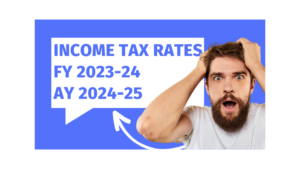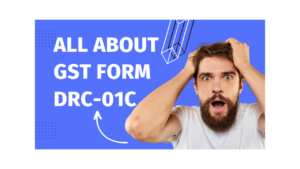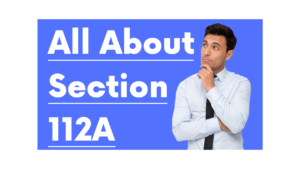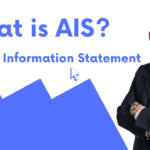Nowadays it has turned into a pattern of being social and keeping up with one’s personality on the computerized stage. One of the virtual entertainment model is Youtube, which in the current situation offering parcel of chances to individuals from one side of the planet to the other to investigate as well as exhibit abilities, information, experience, capacities to help the others in the event that any data is required. An exploration uncovered that in 2020, YouTube has paid Rs 6,800 Crores to YouTube Makers in India as a feature of their YouTube Accomplice Program (for quickness ‘YPP’). That generally means 6.84 lakh regular positions.
YouTube pays the content creators in different ways. The significant portion among all the pay-outs by YouTube is the advertisement revenue. Once the content creator meets the threshold set by YouTube (i.e minimum 4000 public watch hours in the previous 12 months and atleast 1000 subscribers), he will be in a position to monetise his videos. YouTube pays roughly 55% of the advertisement revenue to the content creators and retain the balance.
In this part, we will manage the assessment suggestions on the portion of promotion income that is paid out by YouTube to content makers. Allow us to comprehend the duty suggestions by taking a example.
An guy named Mr. Piyush is an Indian YouTube video producer. He has a sizable subscription base and releases new unique stuff every week. He is eligible for the YPP benefits, and YouTube has been paying him a monthly portion of advertising earnings of, say, Rs 2 lakhs.
The following is a simplified description of the operation model (modus operandi):
- Mr Piyush creates a video.
- Uploads into his own channel.
- Selects that the video is open for monetisation.
- YouTube based on its ads algorithm and plays advertisements on the video posted by Mr Piyush.
- YouTube collects money from advertisers as per their contract.
- YouTube then pays Mr Piyush, a part of such advertisement revenue.
What effects will the GST legislation have on Mr. Piyush’s income is the question that needs to be taken into account. Let’s examine it further now.
Understanding the nature of the supply, who the supplier and recipient are, where the supplier and recipient are located, and where the supply really takes place is necessary in order to comprehend the tax ramifications.
Determination of Nature of Services provided by YouTube to Content Creators:
As was already said, Mr. Piyush uploads his original content to YouTube for viewing by the entire audience. He will be qualified for monetisation and YouTube will split the advertising money if he fulfils the YouTube requirement. It’s critical to comprehend the nature of YouTube’s service at this point.
Allowing users to share videos is YouTube’s primary feature. It is a website where videos can be shared. As a result, a platform was given to Mr. Piyush so that he could upload the movies and make them available to subscribers.
- YouTube is the provider of service, that is giving access to Mr Piyush to upload his videos.
- Mr Piyush is the recipient of the said service.
As was previously said, Mr. Piyush is based in India, while YouTube is based elsewhere. As a result, we have determined the provider, the recipient, and their respective locations. In order to identify the source of supply, we must first look at the type of the service that YouTube offers.
Finding the location of a service’s supplier is essential for determining its taxability.
Because it qualifies as a zero-rated supply under Section 16 of the IGST Act if the recipient of the supply is located outside India, the supplier is located inside India, and the place of supply is outside India, there is no taxability under the IGST Act.
On the other hand, if the location of the service provider is outside of India, the location of the recipient is inside India, and the place of supply is inside India, then the recipient of the supply is liable for paying tax under the reverse charge mechanism, or RCM for short.
As a result, the location of the supply is very important and directly affects how much tax is owed on that supply.
The location of the recipient of services is the place of supply of services, according to Section 13 is general rule. This general rule, however, only applies where the services are not covered by subclauses (3) to (13) of Section 13. Therefore, if we rule out the possibility that the services offered by YouTube do not fall within any of the subclauses of (3) to (13) of Section 13, then Mr. Piyush’s residence will serve as the site of supply. So let’s look at which subsections of Section 13 the services offered by YouTube would fall under.
A review of Section 13 is subclauses (3) to (13) reveals that Section 13(12) is the one that applies in the given situation. The location of the service recipient is the place of supply, according to Section 13(12), which addresses the place of supply of online information and database access or retrieval services (abbreviated “OIDAR”). As a result, YouTube’s services fall inside the purview of OIDAR, and in our case study, Mr. Piyush’s location will serve as the place of supply.
The following can be concluded.
- The supplier of service is located outside India,
- The recipient of supply is located in India and
- Place of supply is India.
In conclusion, RCM mandates tax payment from the beneficiary. The video maker in our case, Mr. Piyush, does not pay anything to use YouTube’s platform, so he would not be subject to any tax consequences.
Determination of Nature of Services Involved in Sharing of Advertisement Revenue:
As was previously said, Mr. Piyush will qualify for YPP if he meets the criteria established by YouTube. Mr. Piyush will be qualified to monetize the video under the YPP, making him qualified to get a portion of YouTube’s ad revenue. For each of his videos, Mr. Piyush must enable the monetize option in order to be eligible for a share of the revenue from advertisements. In this scenario,
- Mr Piyush can be said to be the service provider, since, he is allowing YouTube to run advertisements on his videos.
- Consequently, YouTube would be the service recipient.
The service provider and service receiver’s locations are known to us. The location of supply must be decided, and that depends on the type of supply Mr. Piyush gave to YouTube.
Since one of them is located outside of India, we must rely on Section 13 in this situation as well. Let’s find out whether of Section 13 is subclauses (3) to (13) the services rendered by Mr. Piyush fall under. One could argue that Mr. Piyush’s services should also be referred to as OIDAR. But upon closer inspection, it would seem that OIDAR requires a supply to be delivered from the source to the recipient by telephone or the internet. But in the instance of Mr. Piyush, YouTube already has authority over the video, and by clicking a button (turning on the advertisements for monetisation) that is available to Mr. Piyush, YouTube may insert the ads in his content. In other words, Mr. Piyush need just give his agreement for YouTube to use his video as an advertisement. Thus, the aforementioned service might not be covered by OIDAR. That leaves us with the general rule, which states that the service recipient’s location must be close to the place of supply. Even if someone makes the case that Mr. Piyush’s services are inside the purview of OIDAR, the location of the recipient is still the place of supply. In any case, YouTube’s headquarters will serve as the location of supplies.
The following can be concluded.
- The recipient, YouTube is outside India,
- The supplier, Mr. Piyush is in India and
- The place of supply is outside India.
The majority of the requirements for “export of service” as outlined in Section 2(6) of the IGST Act are met by the supply. It is plausible to assume that Mr. Piyush’s services are “export of services” and, as a result, zero-rated supply under Section 16 of the IGST Act if he receives the advertising money in convertible foreign exchange.
Input tax credits that a service provider has accumulated are refundable under Section 16(3) of the IGST Act if they start providing zero-rated supply. Therefore, Mr. Piyush is eligible to request a refund of the taxes he paid on the inputs and services he purchased for the provision of export-related services, subject to a few requirements and restrictions including ITC on camera and other shooting equipment.
Conclusion:
- The said services qualifies as export of services,
- There is no need for Mr Piyush to pay any tax on the amounts received.
- Regardless of the amount of his receipts, he is required to register under the terms of Section 24 of the CGST Act. To put it another way, even though Mr. Piyush’s revenue in our case study did not exceed Rs. 20 lakhs, he would still be required to register and record his receipts for zero-rated goods in his monthly returns.
Other Incidental Aspects:
Services provided by YouTube to Taxable Persons:
The various agreements that YouTube makes with various parties result in the advertisement money that YouTube shares with content creators. Let’s imagine that a business in India wants to use YouTube to promote its products. They sign a deal with YouTube and leave it up to the advertisements algorithm as a result. In these situations, YouTube is the service provider, and the firm is unquestionably the service recipient. OIDAR will be the type of supply because it deals with online advertising. In such circumstances, India, the service recipient’s location, shall serve as the site of supply. Since, the place of supply is India, the recipient is located in India and provider is located outside India, the tax is required to be paid by Indian company under RCM.
Services provided by YouTube to Non-Taxable Persons:
Recently, YouTube started offering premium subscriptions. An individual can subscribe to YouTube’s premium service for a fee in order to watch material without adverts. In an ideal world, the person would be required to pay tax under RCM because all requirements for the import of services are met. However, Section 14 of the IGST Act mandates that YouTube be required to make payment of tax for all such services given to persons in order to alleviate the individual from acquiring registration and dealing with tax.









